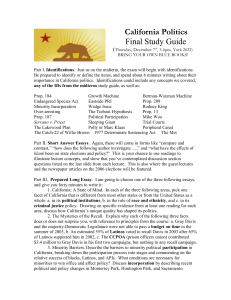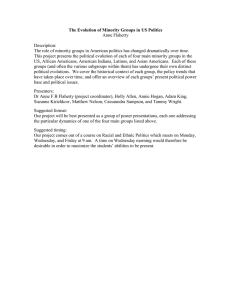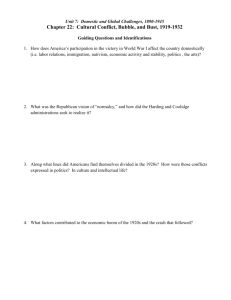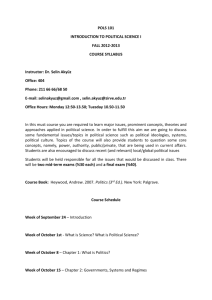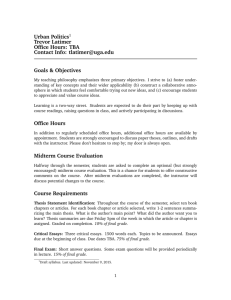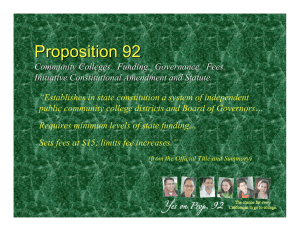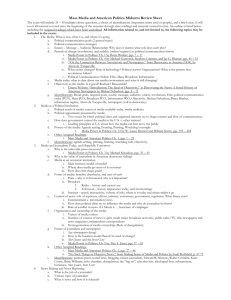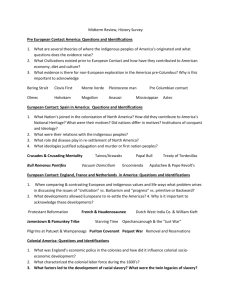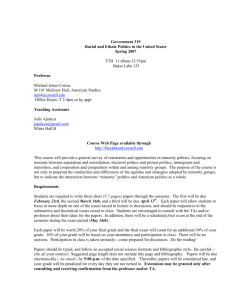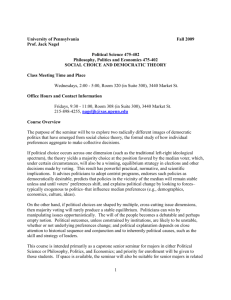California Politics Final Study Guide (Saturday, September 6, 8
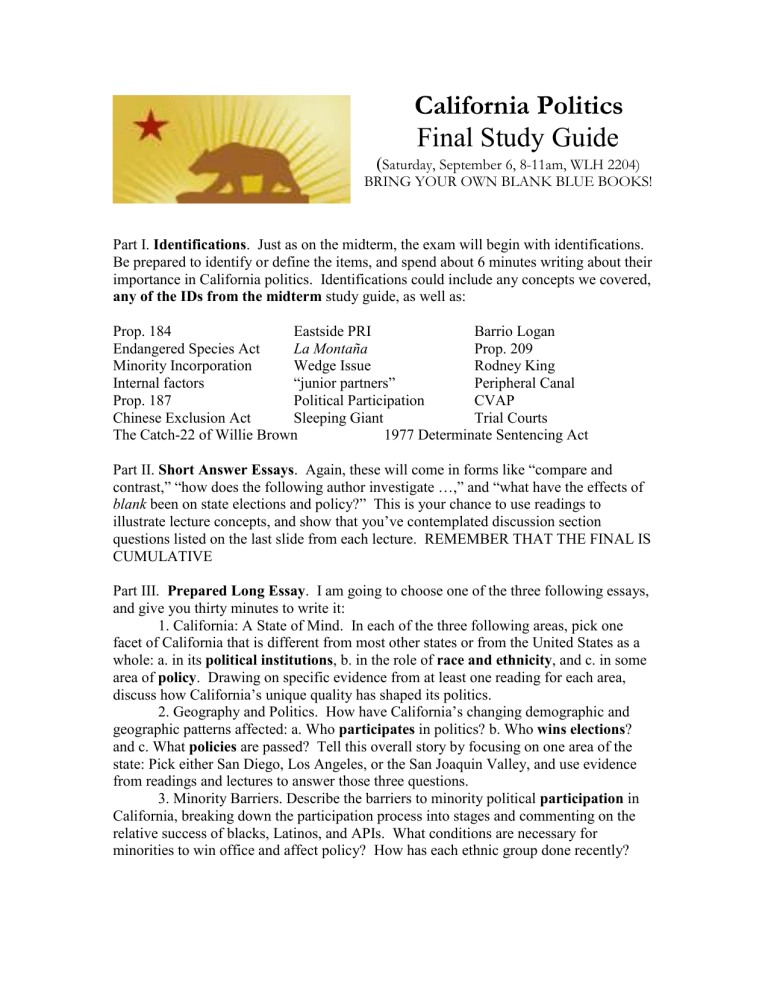
California Politics
Final Study Guide
( Saturday, September 6, 8-11am, WLH 2204)
BRING YOUR OWN BLANK BLUE BOOKS!
Part I.
Identifications . Just as on the midterm, the exam will begin with identifications.
Be prepared to identify or define the items, and spend about 6 minutes writing about their importance in California politics. Identifications could include any concepts we covered, any of the IDs from the midterm study guide, as well as:
Prop. 184
Endangered Species Act
Eastside PRI
La Montaña
Minority Incorporation Wedge Issue
Internal factors
“junior partners”
Barrio Logan
Prop. 209
Rodney King
Peripheral Canal
Prop. 187
Chinese Exclusion Act
Political Participation
Sleeping Giant
The Catch-22 of Willie Brown
CVAP
Trial Courts
1977 Determinate Sentencing Act
Part II. Short Answer Essays . Again, these will come in forms like “compare and contrast,” “how does the following author investigate …,” and “what have the effects of blank been on state elections and policy?” This is your chance to use readings to illustrate lecture concepts, and show that you’ve contemplated discussion section questions listed on the last slide from each lecture. REMEMBER THAT THE FINAL IS
CUMULATIVE
Part III. Prepared Long Essay . I am going to choose one of the three following essays, and give you thirty minutes to write it:
1. California: A State of Mind. In each of the three following areas, pick one facet of California that is different from most other states or from the United States as a whole: a. in its political institutions , b. in the role of race and ethnicity , and c. in some area of policy . Drawing on specific evidence from at least one reading for each area, discuss how California’s unique quality has shaped its politics.
2. Geography and Politics. How have California’s changing demographic and geographic patterns affected: a. Who participates in politics? b. Who wins elections ? and c. What policies are passed? Tell this overall story by focusing on one area of the state: Pick either San Diego, Los Angeles, or the San Joaquin Valley, and use evidence from readings and lectures to answer those three questions.
3. Minority Barriers. Describe the barriers to minority political participation in
California, breaking down the participation process into stages and commenting on the relative success of blacks, Latinos, and APIs. What conditions are necessary for minorities to win office and affect policy? How has each ethnic group done recently?
